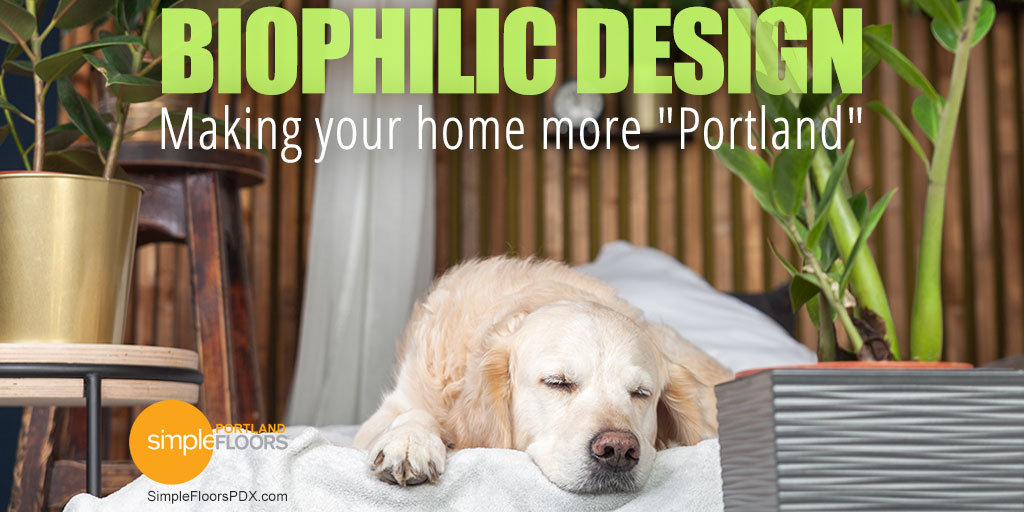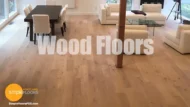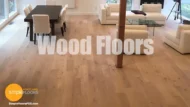There is no doubt that Portland, Oregon is one of the most environmentally conscious cities in the world. Surrounded by such natural beauty, a drive into city limits remains seamless. With the city’s abundance of public parks, trails, and everything in between, it’s no surprise that Portland has been a member partner of Biophilic Cities since 2013. And when we say everything in between, we’re talking high rises, roof tops, and entry ways, too. Just a short walk through downtown Portland and you’ll see buildings intertwined with nature in ways that no doubt will inspire city designers and architects for years to come.
But, it’s not just on the outside where we’re seeing design with a more intentional connection to nature, it’s happening on the inside too. And, by the numbers, we sure could use it. According to the Environmental Protection Agency, 87% of our lives are spent inside buildings. Did you see that? By the looks of that number, there is only one thing to say, and that is, we need a lot more nature in our life. So, what does this word biophilic mean and can there be a link to home design and becoming seamless to our surrounding environments just as Portland, as a city, has become with its landscapes and buildings alike?
What Is Biophilia?
Biophilic comes from the word biophilia which derived from the 1984 book by the same name that was authored by Edward O. Wilson, where he referred to humans and their love of living things as well as our innate affinity with nature. With this, Wilson suggests that humans possess an innate tendency to seek connections with nature. As a side note, no wonder we absolutely love tree houses as kids. There was just something about being above ground and amidst a sea of trees. If ever there was a time to let your imagination run wild, here it would.
What Is Biophilic Design?
The study of biophilic design is fascinating. In understanding that by the year 2050, 66% of the developed world will be urbanized, and therefore further detached from nature, is it any wonder as to why there is a biophilic design movement underway?
But what is biophilic design? Well, picture nature as it is woven seamlessly into the design of a building or space. What makes the space biophilic in nature is that it includes all things natural. Natural light, natural materials, natural colors, natural shapes, vegetation, and even animals.
Sounds pretty Portland, doesn’t it? We thought so too!
Biophilic Design Benefits Well-Being
Previously, we wrote about how homeowners experienced improvements in their lifestyles after they completed a kitchen renovation. With biophilic design, multiple studies have been done that have discovered a handful of health and wellness benefits from designing with biophilia in mind.
Some benefits of biophilic design are:
- Reduce stress
- Eco-friendly
- Enhances creativity and clarity of thought
- Improves well-being
- Expedite healing
Home Design With Biophilia In Mind
Whether it’s with the addition of vegetation, skylights, windows, as well as the use of natural materials, there are many ways to bring biophilia to your Portland home.
 We asked Mitzi Beach to share her thoughts on biophilic home design with us. “I do agree with biophilic design as well as in our human need to connect with nature not only from being outside in nature itself, but also in our everyday work, home, and etc. I am a huge believer in having tons of natural lighting, large open windows, lots of greenery whether inside or outside, even inhaling the essence of healing fresh air by being able to open our windows.”
We asked Mitzi Beach to share her thoughts on biophilic home design with us. “I do agree with biophilic design as well as in our human need to connect with nature not only from being outside in nature itself, but also in our everyday work, home, and etc. I am a huge believer in having tons of natural lighting, large open windows, lots of greenery whether inside or outside, even inhaling the essence of healing fresh air by being able to open our windows.”
The popular designer also weighed in on the health benefits of this style of design on humans stating that “tons of research now tell us why we do not perform well in windowless spaces or heal as quickly in medical facilities without the benefit of viewing nature’s healing balm.”
Make Your Home More Portland With Biophilic Design
Are you ready to make your home a little more like Portland with the addition of a lot more nature in your life and space? Here are but a few, of many things to consider for giving your house a biophilic renovation.
Vegetation
Vegetation goes without saying with incorporating greenery throughout the home, but even down to a shower bath mat made of pebbles or moss can make your home come alive with a sense of nature. Consider also adding a small herb garden to that window sill in the kitchen that sits right next to the sink to offer up a taste of nature to your space as well. In some office spaces as well as even living rooms, there has been an introduction of green plant walls. Talk about a statement.
Natural Light
Of course, your home, more than likely, has windows and maybe even a skylight or two that is already letting some of that natural light in. But, how can the interior design of those same spaces further enhance that natural light to further bring your home to life, by letting the outside, in? From paint schemes, wallpaper designs and patterns that complement the natural light on the outside, to even the type of tiles or backsplash you have in your kitchen, there are many ways to bring a lot more outside light into your home. Even the countertops in a kitchen can help enhance natural light within that setting.
Natural Materials
Nothing says nature more than eco-friendly wood flooring as well as the use of natural materials in your overall home design. A simple trip to our Portland showroom would be a great place to start if you’re thinking you want to add a little more “eco-friendly” to your home, and especially your floors.
Biophilic Design Is More Than A Look
There is so much more to biophilic design than we could cover in this short article. But one thing is for certain; Biophilic design is not just about a specific look or feel, it is a lifestyle that is committed to caring for our planet, respect for our outdoors, and the quality of life not only we want to live, but also the life of future generations, that we hope, will get to live and experience this great big beautiful planet, too.









